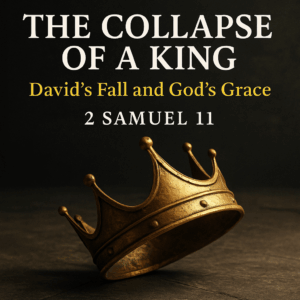⏱️ Estimated Reading Time: 6 min read
A few years ago, I visited a local Anglican church. As a Baptist, we tout ourselves as people of the Book; we are fiercely committed to Scripture. But as I observed this Anglican worship service, I realized that in one service, more Scripture was read aloud than I had heard in a year during my childhood in the Baptist church. The only text read aloud was the sermon text in the Baptist church I grew up, but these Anglicans were reading large chunks of Scripture each week. These Anglicans were obeying Christ’s command, whereas the churches I had grown up in which are committed to the Bible did not. This experience cemented in my mind the importance of the public reading of Scripture and its necessary inclusion in the worship service (1 Tim. 4:13).
If we are commanded to publicly read Scripture in the corporate worship service, this naturally leads to the question of what passages should be read? Pastors must answer this question when they incorporate public Scripture reading into the worship service. I will outline three different approaches to answering the question:
Scripture Readings Aligned with Sermon Text
The first approach is to base the choice of Scripture readings on the sermon text. The pastor can ensure that the Scripture readings align both with the music in the service and the sermon text. If a worship service has only one Scripture reading, this would be an effective approach, especially if the passage read was a cross-reference related to the sermon text. An example of this is reading Malachi 3:1-6 if the pastor preached Mark 1:1-8 because Mark quotes Malachi.
Unless the pastor has his preaching planned far in advance, the Scripture reading passages will be chosen during the week prior to preaching the sermon; this leaves the Scripture reader at a disadvantage because he will not have as much time to practice and familiarize himself with the passage to be read.
Systematically Reading through a Book
Another approach is systematically reading through a book of the Bible. The primary advantage of this method is that you will systematically and sequentially read through a book of the Bible in the service over the course of weeks and months. Attenders will hear each word of Romans or Isaiah. If the pastor is a more topical preacher or a series-driven preacher, this is a way he can ensure that the congregation is reading through the Bible as a church.
An administrative advantage is that the readings can be planned out months in advance, saving the pastor time during the week. It also helps the readers know when and what they will read. This method is also helpful if your church does not adhere to the liturgical calendar, which determines the readings of many lectionaries.
One problem with this method is that the passage might not line up with the sermon text. This might leave some in the congregation wondering what connection this passage has to the sermon or the worship music. However, there is also the opportunity for serendipitous connections with the sermon passage to be made. These can be increased if the pastor is conscientious in making connections between the Scripture reading passage and the sermon passage.
A Lectionary
The third approach to choose the readings is to use a lectionary. There are multiple lectionaries out there; most of them are associated with more mainline denominations (though not always). The Lutheran Church Missouri-Synod (https://www.lcms.org/worship/lectionary-series) and the Anglican Church in North America (https://bcp2019.anglicanchurch.net/index.php/downloads/ – under Calendar & Lectionaries) both have lectionaries that contain Old Testament readings, a New Testament Reading (except the Gospels), and a Gospel reading, as well as selections of Psalms. The lectionary our church uses is here (https://www.christkirk.com/resources/lectionary/), and it only has an Old Testament Reading and a New Testament Reading.
A helpful aspect of a lectionary is that the readings are thematically tied together; sometimes, this theme revolves around the liturgical calendar. At other times it revolves around a theological topic, such as forgiveness or Christ’s divinity. The pastor could easily work the theme of the readings into the sermon, even if the sermon is on a different text than the readings.
A good lectionary includes passages from all themes and subject matter. Sometimes the passages will be intended to bring hope and peace, while at other times, the passages cause us to reflect upon our sin. Themes of repentance and lamentation, both of which are appropriate in worship, are included. A good lectionary causes the church to hear passages that the pastor or reader might not have chosen otherwise but are necessary to hear nonetheless. It is sobering for a church to hear the judgment of God from the prophet Amos and to realize that apart from Christ, that judgment is waiting for each of us too.
Another helpful aspect of a lectionary is that the year’s readings are already determined, allowing all the Scripture readers to know in advance when and what they will be reading. This administrative benefit helps bi-vocational pastors, or (especially) busy pastors because it is one less detail to worry about each week, assuming the work of assigning weeks at the beginning of the year was done.
A lectionary does have some drawbacks. First, the passages might not relate to the sermon passage. The lectionary we follow loosely follows the liturgical calendar, which means that sometimes the readings and sermons do not line up in a way that is helpful. Another drawback is that some lectionaries, such as the one found in the Book of Common Prayer (1979), infamously leave verses out of the readings that the editors of the lectionary found controversial or theologically problematic. This requires diligence in choosing the lectionary to ensure that this does not happen because “all Scripture is God-breathed” (2 Tim. 3:16-17).
The Important Thing
Whichever of the three methods you choose, the important thing is that Scripture is read in the corporate worship service. God’s people need to hear God’s Word. They need to hear the grand themes of Scripture. They need to hear God’s call to faith, obedience, repentance and lament from Scripture. Reading Scripture aloud in corporate worship and doing so in a systematic way will accomplish these ends for the glory of God and the edification of his people.




